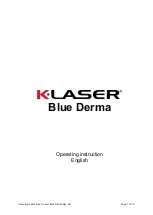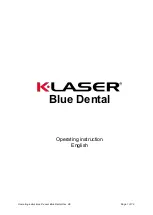
744T User Guide and Technical Information
46
v. 2.09
Features and specifications are subject to change. Visit www.sounddevices.com for the latest documentation.
744T with bottom panel
removed showing hard
drive mounting location
The internal hard drive is not intended as a swappable exchange medium. The header connector is not
rated for repeated removal and insertion. Only qualifi ed service technician using proper ESD precautions
should perform drive replacement.
Drive Failure
Hard disk drives are mechanical devices and are susceptible to damage from physical shock. One
type of physical shock, called
operating shock
, occurs when the disk is in operation. During opera-
tion, the drive head is typically over the drive platters reading and writing data. When a physical
shock to the drive occurs during operation, the head and the platters can come into contact causing
both components to be damaged. The second type of shock, called
non-operating shock
, occurs
when the head is in the unloaded position, or not positioned over the platters. When a physical
shock occurs in the non-operating state, the head can contact the ramp it is positioned over and dam-
age the ability of the head to read and write data to the hard disk drive. All devices with hard drives
are subject to damage from operating and non-operating shock.
The mechanical construction of the 744T is designed to minimize the transmission of shock to the
hard drive. The drive is isolated from the chassis using special shock-reducing closed-cell foam. This
material increases the amount of shock the hard drive can withstand. Additional protection can be
achieved by operating the unit in a carry case.
If the recorder is used in applications subject to extreme motion, Sound Devices recommends recording to
Compact Flash only. The hard drive will park its write heads to reduce the chance of failure.
With all electrical devices, the higher the ambient temperature the shorter the device’s operational
life. Therefore, take care to observe the specifi ed temperature rating.
There is also a risk from sudden temperature changes, which can create condensation inside the
drive. This condensation can lead to the drive’s read/write heads adhering to the disk surfaces
which will, in turn, stop the hard disk from rotating. Condensation tends to occur when the tempera-
ture inside the drive suddenly falls, for example, just after the unit is moved to a new location, or
after operation is stopped in a cold environment.
Содержание 774T
Страница 2: ...backside front cover ...
Страница 81: ...79 ...
Страница 82: ...702 rev 2 09 Printed in U S A ...
















































